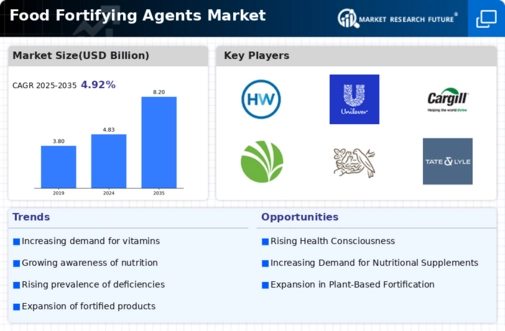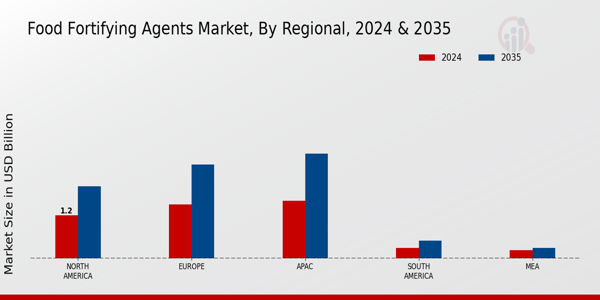Market Trends
Key Emerging Trends in the Food fortifying agents Market
The food fortifying agents market has witnessed notable trends in recent years, reflecting a growing awareness and demand for fortified food products. As consumers increasingly prioritize health and wellness, the market has responded with a surge in the production and consumption of foods enriched with essential nutrients. One prominent trend driving this market is the rising prevalence of nutritional deficiencies across the globe. With an increasing number of people recognizing the importance of a balanced diet, food fortifying agents have become instrumental in addressing nutrient gaps. Government initiatives and regulations also play a pivotal role in shaping market trends. Many countries have implemented mandatory fortification programs to combat specific nutritional deficiencies within their populations. For instance, fortification of staple foods like flour, rice, and salt with key nutrients such as vitamins and minerals has become a common practice to improve public health outcomes. This regulatory push has significantly contributed to the expansion of the food fortifying agents market, as manufacturers strive to meet compliance standards while catering to consumer preferences. Moreover, changing dietary patterns and lifestyles have fueled the demand for fortified foods. As individuals adopt busier routines and processed foods become more prevalent, there is a growing recognition of the need for convenient and nutritionally enhanced products. This has led to an influx of fortified snacks, beverages, and ready-to-eat meals in the market. Consumers are increasingly seeking products that not only satisfy their taste buds but also contribute to their overall well-being, driving innovation in the food fortifying agents sector. Collaboration and partnerships within the food industry have emerged as another notable trend. Manufacturers are joining forces with research institutions, health organizations, and ingredient suppliers to develop effective and scientifically validated fortification solutions. This collaborative approach not only ensures the delivery of high-quality fortified products but also fosters trust among consumers who are becoming more discerning about the sources and credibility of nutritional claims. On the technology front, advancements in food fortification techniques have allowed for the development of products with improved bioavailability and stability of added nutrients. Nanotechnology, for example, has opened new avenues for enhancing the absorption of fortified elements in the human body. This technological progress has not only expanded the scope of fortification but has also enabled the creation of innovative and appealing fortified food products. Sustainability is increasingly becoming a key consideration in the food fortifying agents market. As consumers become more environmentally conscious, there is a growing demand for sustainable and responsibly sourced ingredients. This has prompted manufacturers to explore eco-friendly fortification methods and packaging solutions. The emphasis on sustainability is not only driven by consumer preferences but is also in line with broader industry efforts to reduce the environmental impact of food production and consumption.













Leave a Comment